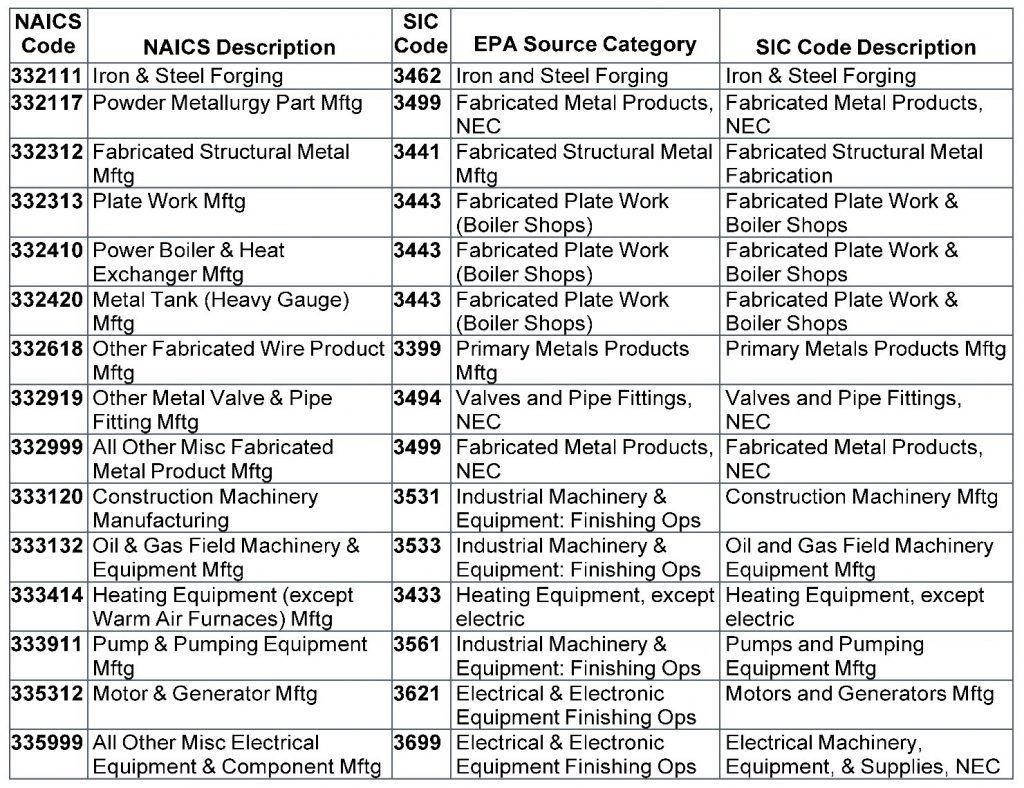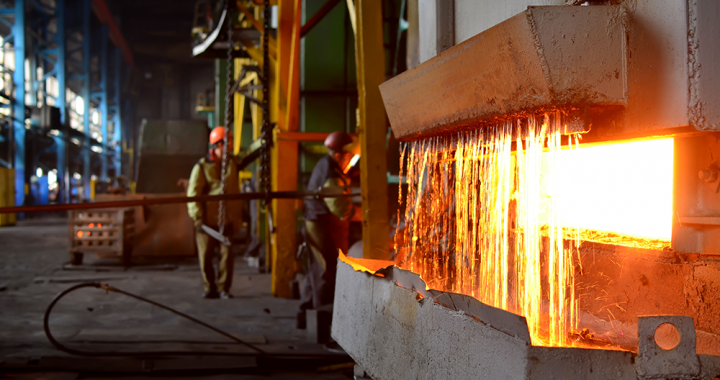-
EPA’s June 2020 guidance suggests that the agency is now casting a broader net in terms of which facilities are potentially subject to the rule.
Even if your facility has previously been determined to NOT be subject to NESHAP 6X, it’s possible the rule may actually apply. How? We’ll explain.
First off, what’s NESHAP 6X, aka National Emission Standards for Hazardous Air Pollutants (NESHAP): Area Source Standards for Nine Metal Fabrication and Finishing Source Categories (Subpart XXXXXX)?
NESHAP 6X is an EPA rule issued thirteen years ago (2008) that sets standards for area sources (smaller-size facilities that emit less than 10 tons per year of any single hazardous air pollutant [HAP] or less than 25 tons per year of HAPs in aggregate) in the following nine metal fabrication and finishing source categories:
- Electrical and electronic equipment finishing operations
- Fabricated metal products manufacturing
- Fabricated plate work (boiler shops) manufacturing
- Fabricated structural metal manufacturing
- Heating equipment manufacturing, except electric
- Industrial machinery and equipment finishing operations
- Iron and steel forging
- Primary metal products manufacturing
- Valves and pipe fittings manufacturing
What’s considered “metal fabrication and finishing HAP” (aka MKHAP)?
The U.S. EPA defines MKHAP as any compound of cadmium, chromium, lead, manganese, and nickel.
What industrial processes do the NESHAP 6X requirements apply to?
- Dry abrasive blasting
- Dry grinding and polishing with machines
- Dry machining
- Spray painting
So, if your facility is engaged in these processes, if its operations use or emit compounds of cadmium, chromium, lead, manganese and nickel, and if it’s in one of the nine metal fabrication and finishing source categories, it’s regulated by NESHAP 6X.
Since many facilities engage in the processes regulated by NESHAP 6X, evaluating whether or not a facility is within the scope of the nine source categories is important to assessing potential applicability.
For some years following initial issuance of this standard, many in the regulated community relied heavily on a facility’s Standard Industrial Classification (SIC)/North American Industrial Classification System (NAICS) code combination to determine whether or not they were subject to NESHAP 6X.

This approach was supported by guidance provided by U.S. EPA in a November 2011 Questions & Answers (Q&A) document, which included largely unequivocal guidance about which SIC/NAICS code combinations were covered and which were not. For example, the 2011 Q&A document included the following answers to questions related to the potential applicability of NESHAP 6X:
“If the SIC/ NAICS code combination used to describe the facility’s primary activities is not one of those specifically listed on the website chart shown here, the facility is not subject to the rule. … EPA is restricting applicability to the SIC/NAICS codes, as in the applicability chart shown here and on the EPA website.”
However, in June 2020, EPA published an updated version of the NESHAP 6X Q&A document with a considerably less definitive description of which sources fall within the purview of the rule. For example, EPA’s updated responses to the same questions as those included above are as follows:
“For applicability questions, consult the source category descriptions in the preambles to the proposed and final rules or contact your regional EPA authority. …For applicability questions, consult the source category descriptions in the preambles to the proposed and final rules or contact your regional EPA authority. As explained in the final rule preamble (73 FR 42979), the SIC/NAICS codes that are provided in the preamble and in Table 1 below are not intended to be exhaustive but rather to provide a guide…”
In sum, EPA’s more recent guidance suggests that the agency is now casting a broader net in terms of which facilities are potentially subject to the rule.
It is notable that the wording of the rule and the associate preamble language tends to support the EPA’s stance as reflected in the June 2020 Q&A guidance, which appears to indicate broader applicability of the NESHAP 6X rule relative to the guidance provided in the November 2011 version.
This being the case, facilities that previously determined they were not subject to NESHAP 6X solely on the basis of their SIC/NAICS code should consider revisiting their applicability determination to verify that it is consistent with EPA’s current interpretation/guidance, and that their non-applicability determination remains defensible.
Need help?
